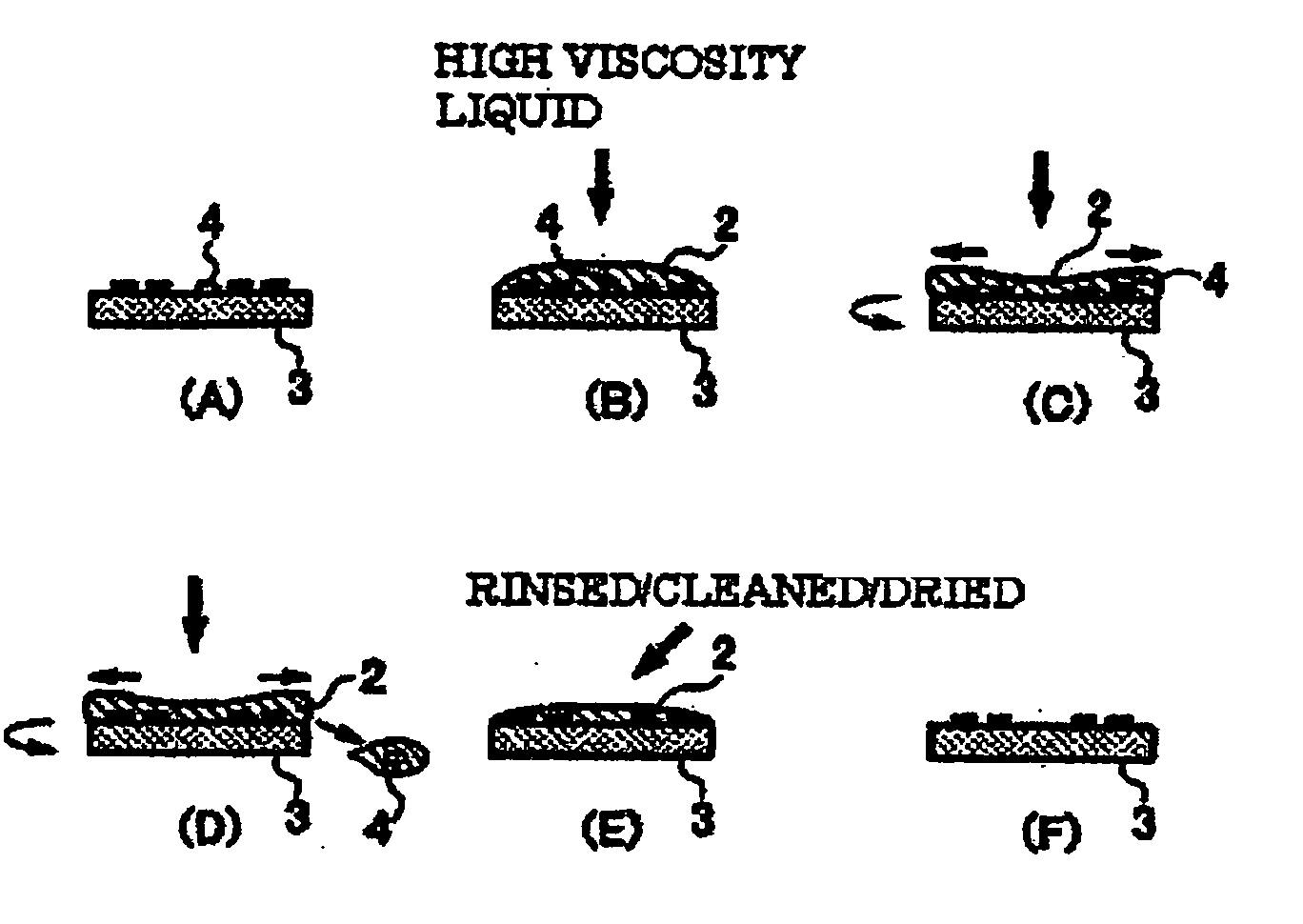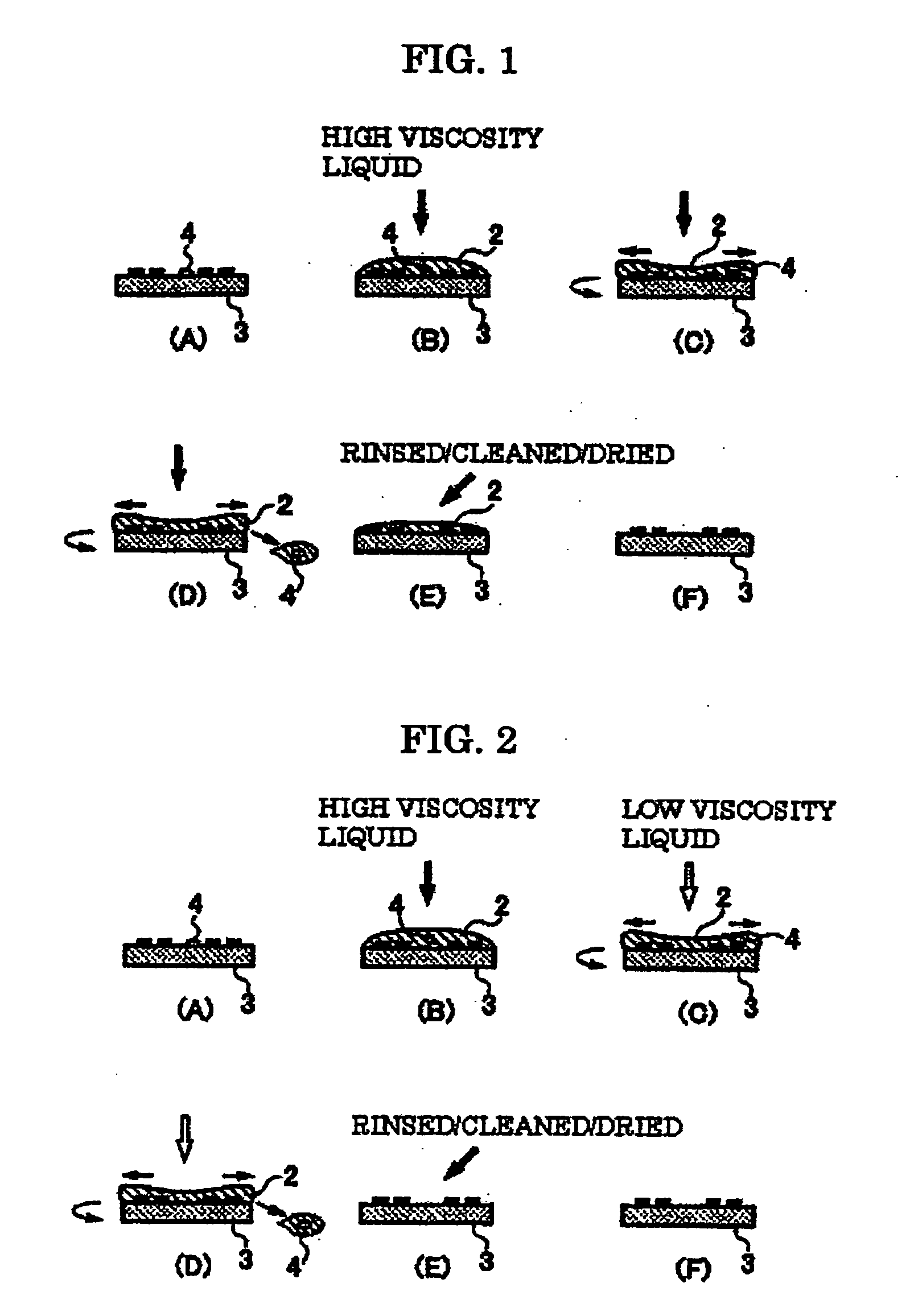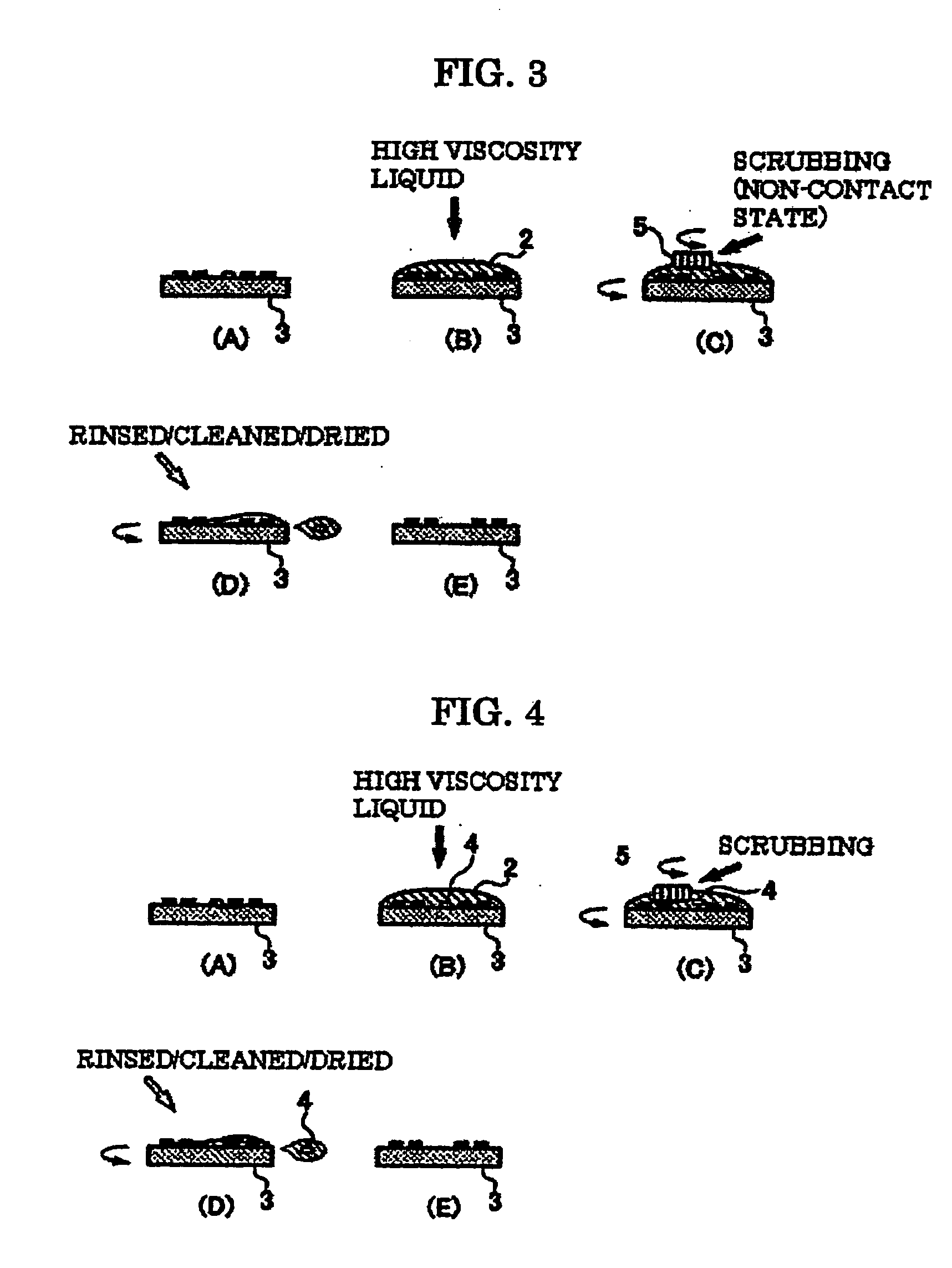Cleaning method, particle removing method, cleaning apparatus, and cleaning liquid
a cleaning method and particle removal technology, applied in the direction of cleaning using liquids, instruments, photomechanical equipment, etc., can solve the problems of insufficient effect, difficult to meet such strict requirements with conventional physical cleaning or chemical cleaning described above, and increasing particle requirements in the futur
- Summary
- Abstract
- Description
- Claims
- Application Information
AI Technical Summary
Benefits of technology
Problems solved by technology
Method used
Image
Examples
example 1
[0092]FIG. 1 is an explanatory view illustrating a particle removing method according to an example 1 of the present invention. Referring now to FIG. 1, the particle removing method according to the example 1 will be described. In the particle removing method according to the example 1, a photomask 3 to be cleaned is installed on an object holding part (not shown) which fixes and rotates the photomask 3 by a vacuum adsorption device or the like (FIG. 1A), and by a liquid supply part, a high viscosity liquid 2 is supplied to an upper surface of the photomask 3 to be cleaned using a dripping nozzle (not shown) (FIG. 1B).
[0093]Then, the photomask 3 is rotated while supplying the high viscosity liquid 2. By rotating the photomask 3 in this manner, the high viscosity liquid 2 moves by a centrifugal force (FIG. 1C). A rotating speed at this time was set to the speed capable of relatively moving the liquid efficiently with respect to the photomask (approx. 200 rpm). While the high viscosit...
example 2
[0098]FIG. 2 is an explanatory view illustrating the particle removing method according to an example 2 of the present invention. Referring now to FIG. 2, the particle removing method according to the example 2 will be described hereafter. In the particle removing method according to the example 2, the photomask 3 to be cleaned is installed on the object holding part (not shown) which fixes and rotates the photomask 3 by the vacuum adsorption device or the like (FIG. 2A), and then, the high viscosity liquid 2 which is the same liquid as that used in the example 1 is supplied to the cleaning surface of the photomask 3 through the liquid supply part such as the dripping nozzle or the like, not shown (FIG. 2B). In this case, vibrations of the ultrasonic wave may be applied to the object by an ultrasonic wave generating device, not shown. Subsequently, the high viscosity liquid 2 is moved by injecting a lower viscosity liquid than the high viscosity liquid such as pure rinsing water at ...
example 3
[0105]FIG. 3 is an explanatory view illustrating the particle removing method according to an example 3 of the present invention. Referring now to FIG. 3, the particle removing method in the example 3 will be described. In the particle removing method according to the example 3, the photomask 3 to be cleaned is installed on the object holding part (not shown) which can perform rotating operation (FIG. 3A), and the same high viscosity liquid 2 as that used in the example 1 and the example 2 is supplied to the surface of the photomask to be cleaned by the liquid supply part using the dripping nozzle (not shown) (FIG. 3B).
[0106]Subsequently, a gap (ex. approx. 1 mm) is provided between the photomask 3 and a sponge 5 (such as a circular sponge formed of PVA having diameter of 5 cm), and the sponge 5 is moved (ex. 100 mm / sec.) by an arm (not shown) for holding the sponge on the photomask 3 while keeping a non-contact state by keeping the aforementioned gap, whereby the entire surface of ...
PUM
| Property | Measurement | Unit |
|---|---|---|
| pH | aaaaa | aaaaa |
| viscosity | aaaaa | aaaaa |
| size | aaaaa | aaaaa |
Abstract
Description
Claims
Application Information
 Login to View More
Login to View More - R&D
- Intellectual Property
- Life Sciences
- Materials
- Tech Scout
- Unparalleled Data Quality
- Higher Quality Content
- 60% Fewer Hallucinations
Browse by: Latest US Patents, China's latest patents, Technical Efficacy Thesaurus, Application Domain, Technology Topic, Popular Technical Reports.
© 2025 PatSnap. All rights reserved.Legal|Privacy policy|Modern Slavery Act Transparency Statement|Sitemap|About US| Contact US: help@patsnap.com



